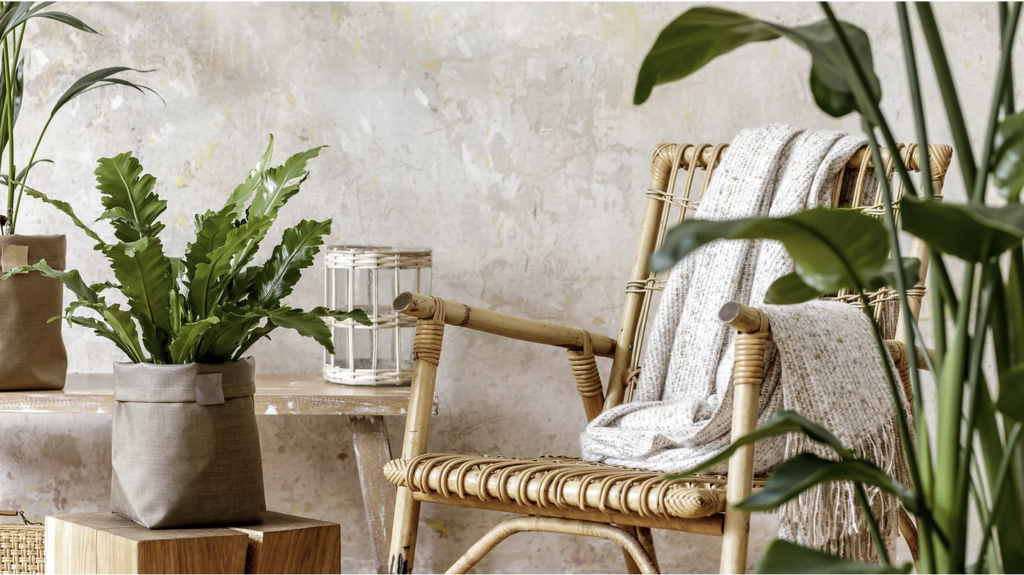This post may contain affiliate links, meaning I may receive a commission from purchases made through links. Learn more on my privacy policy page and disclaimer page
Minimalism is a style that emphasizes simplicity and sustainability. To stay Eco-friendly, minimalists try to cut out many unnecessary items and have clean, clutter-free spaces. They also ride bicycles to work and recycle or upcycle things in the home. Choosing minimal furniture is another way to save energy and save the environment.
Eco-friendly interior design’s primary goal is to avoid using harmful chemicals. Rather than traditional paints, green interior designers use low-VOC paint that does not leave marks on the walls. They also use less harmful finishes for hardwood floors. This flooring can be used for a long time and is a good option for an Eco-friendly interior style.

Minimalism
Minimalism began in the mid-twentieth century when an influential artist named Frank Stella advocated for “less is more.” Recently minimalism has enjoyed a renaissance as more people recognize the benefits of fewer possessions and a simpler lifestyle.
Minimalism is a style that emphasizes simplicity and sustainability. To stay eco-friendly, minimalists try to cut out many unnecessary items and have clean, clutter-free spaces. They also ride bicycles to work and recycle or upcycle things in the home. Choosing minimal furniture is another way to save energy and save the environment.
Minimalist interior design also emphasizes natural elements—the minimalist style is based on the Zen philosophy of harmony between man and nature. Many minimalist homes use wooden furniture, including coffee tables, dining tables, cabinets, and wardrobes. Natural fabrics or prints on upholstery are also great for incorporating the style.
Scandinavian
The Scandinavian interior style is known for its simplistic and functional style. The design emphasizes connection, warmth, and functionality. Although it has undergone some changes over the years, this style is still in great demand today. Its clean, minimal lines and simplicity make it a practical choice. The Scandinavian design movement took inspiration from early twentieth-century art movements and interwar Scandinavian design.
Sustainability is another critical element of the Scandinavian interior style. Choosing minimal pieces and materials means that you will use less overall. Minimalism also forces you to rethink how you use space. It allows you to save money on furniture and maximize the amount of space you have. The materials used in style are also environmentally friendly, as they are frequently produced using natural resources.
A Scandinavian kitchen is warm, stylish, and functional. To achieve this look, keep the countertops clear and the decor simple. Add accents like a wooden bowl filled with fruit or a vase of plants to add warmth. Another room that reflects the Scandinavian style is the study. This space takes an approach to multi-functional spaces and embraces natural light.
Scandinavian-inspired
Design with sustainable principles in mind. Scandinavian interior design is a perfect fit for those who value nature and the environment. Designers in Scandinavia use recycled and natural materials whenever possible, collaborate with local craftspeople, and avoid unnecessary material waste. The Scandinavian style is well known for its clean lines, organic shapes, and minimal clutter.
A Scandinavian-inspired interior style incorporates natural elements such as light wood, nature-inspired sculptural pieces, and house plants. To create a Scandinavian-style home, you can choose Eco-friendly furnishings, textiles, and upholstery. If you want a modern look without sacrificing Eco-friendliness, try mixing and matching metallic treatments with timber pieces.
Light colors are often used in Scandinavian homes, reflecting light more efficiently. Because light is a high component of Scandinavian design, it helps to keep the rooms bright and airy. Light wood fixtures are also standard, unlike other European-style fixtures. Scandinavian lighting uses modern chandeliers and stylish pendant lights.
Minimalist
Minimalist interior design is an increasingly popular way to decorate your home. It not only saves space but also helps you maintain a greener home. A minimalist home can be beautiful, too. Minimalist styles can range from Scandinavian and Japanese to create a stunning blend of nature and craftsmanship.
Minimalism is all about minimizing clutter and maximizing space. Embracing this style means reducing the need for new furniture and reusing old items. It promotes sustainability and minimizes the negative impact of consumerism. The Scandinavian design style is a prime example of this type of interior style, which highly emphasizes organic materials. A minimalist approach will also eliminate the need for processed, synthetic materials.
Minimalism was born out of the post-war Dutch movement called De Stijl. The movement was inspired by the zen simplicity of traditional Japanese gardens, as well as the clean aesthetics of Scandinavian design. However, the minimalist approach is more about striving for perfection, which can lead to an endless spiral of despair.
In conclusion
An eco-friendly interior style is a great way to be sustainable and stylish at the same time. With a few simple changes, your home can be eco-friendly and chic. Implementing eco eco-friendly interior style into your home is easy and rewarding. Your home will thank you for making it more sustainable, and you’ll feel good knowing you’re doing your part to help the environment.




